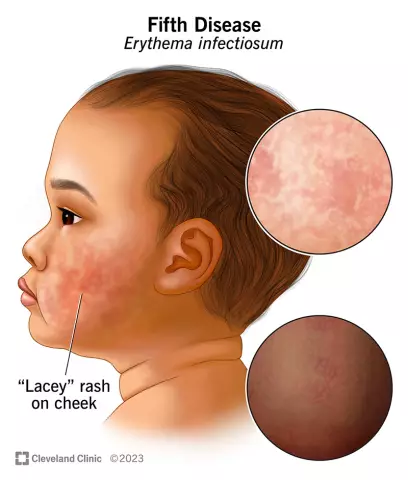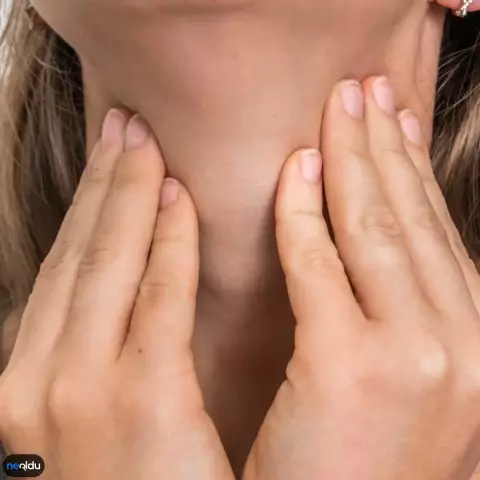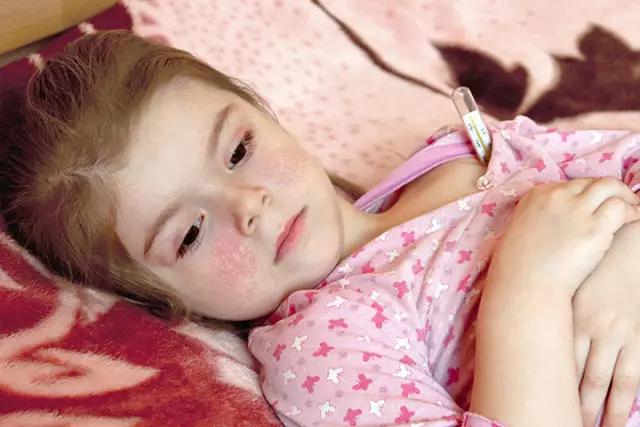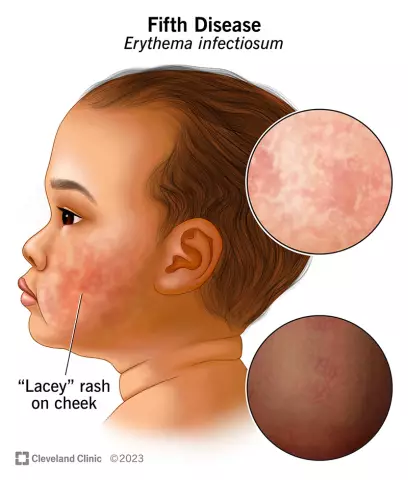- Author Rachel Wainwright [email protected].
- Public 2023-12-15 07:39.
- Last modified 2025-11-02 20:14.
Toxic erythema

Toxic erythema is a polymorphic rash on the skin of newborns in the first weeks of life. Rashes, in general, reflect the process of adaptation of the infant to external living conditions and the natural environment, after being in the womb. This borderline condition disappears within a few days and occurs in 20% of newborns.
Causes and symptoms of toxic erythema
Toxic erythema of newborns is an allergic reaction to components of breast milk and is divided into two stages - chemical and physiological. At the first stage, active substances are released, which are mediators of an allergic reaction. At the second stage of erythema, immunological changes appear, which may be associated with problems with the functioning of the intestines, hypothermia, and bacterial lesions.
The clinical picture of toxic erythema is characterized by the appearance on the second or third day of life of allergic rashes on the baby's face, which appear as dense gray-red spots with small bubbles. The spots appear mainly on the face, head, around the joints, on the buttocks and chest. An allergic reaction can be both local and general.
In some cases, repeated rashes are observed within 3-4 days, but more often the allergic reaction passes completely and does not appear again.
Toxic erythema of newborns causes anxiety, fever, slight lymph nodes, dyspepsia, and enlargement of the spleen. In most cases, in addition to external eruptions, this allergic reaction affects the physical and psychological state of the infant.
The disease is most common in infants who are naturally breastfed and only 10% of infants who are bottle-fed.
Diagnosis of toxic erythema of newborns
Toxic erythema is established by a clinical method and microscopic analyzes.
To determine an accurate diagnosis in non-specific or controversial cases, a blood test and a study of the stratum corneum of the epidermis are prescribed. The study shows the presence or absence of erythema papules in the ducts of the sebaceous glands with edema and accumulation of leukocyte infiltrate.
In some cases, a study of the composition of breast milk is prescribed and the identification of individual allergens in it for the newborn.
Treatment of toxic erythema

In the overwhelming majority of cases, toxic erythema does not require special treatment and disappears within a few days after birth. In other cases, medication and physiotherapy are prescribed.
The main treatment for toxic erythema begins with air baths and special care for pustules on the skin. The child should be protected from adverse effects on the skin, as well as the presence of allergens in the mother's diet should be excluded.
With a protracted manifestation of an allergic reaction, antihistamines and biological agents containing vitamins E, B6 and C, rutin and lactobacterin are prescribed.
If there are severe rashes around the umbilical cord, then the doctor prescribes to lubricate the pustular elements with an alcohol solution, brilliant green and a solution of 5% potassium 2 times a day, and also sprinkle the skin with talcum powder with zinc oxide.
To normalize the general condition of the baby with toxic erythema, it is recommended to drink plenty of fluids, fresh air, use a glucose solution and drugs containing potassium.
YouTube video related to the article:
The information is generalized and provided for informational purposes only. At the first sign of illness, see your doctor. Self-medication is hazardous to health!






